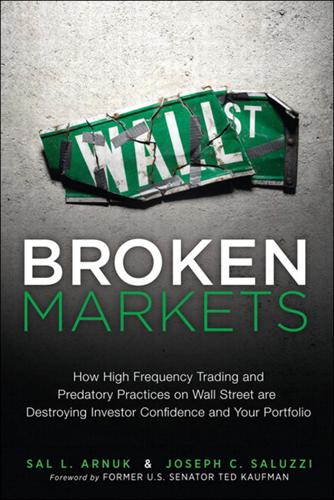
Broken Markets: How High Frequency Trading and Predatory Practices on Wall Street Are Destroying Investor Confidence and Your Portfolio
by
Sal Arnuk
and
Joseph Saluzzi
Published 21 May 2012
The damage to investors is not only missed trading opportunities due to an uneven playing field, but harm to the integrity of public markets and quoting. What incentive is there for investors to display their quotes when those quotes can be used, in turn, to disadvantage them? How Latency Arbitrage in Dark Pools Hurts Investors Another way HFTs hurt investors in dark pools is through latency arbitrage. Latency arbitrage arises from the two speeds in the markets. On one hand, HFT firms, who colocate at the exchanges and buy their private data feeds, can construct the National Best Bid and Offer (NBBO) of any stock milliseconds before the investing public sees stock prices via the Securities Information Processor feed (SIP).
…
Goldman Sachs, which operates Sigma X, one of the largest dark pools by volume, has recently undertaken the services of Redline Inc. and its InRush Ticker Plant product to speed up Sigma X’s NBBO calculation.11 To us, this is an acknowledgment of the harm latency arbitrage causes investors. In a white paper we published in December 2009, “Latency Arbitrage: The Real Power Behind Predatory High Frequency Trading,” we raised three serious questions about market integrity surrounding Latency Arbitrage:12 1. The primary response from HFTs or market centers is typically “a penny or two should not matter to long-term investors; this is much ado about nothing,” to paraphrase the CEO of a major ATS who was addressing a financial industry conference in New York City in early November.
…
A-Team Group, “Q&A: Redline’s Mark Skalabrin on Goldman, and Why Cell Is Better” (Sept. 25, 2011), Low-Latency website, http://low-latency.com/article/qa-redlines-mark-skalabrin-goldman-and-why-cell-better. 12. Sal Arnuk and Joseph Saluzzi, “Latency Arbitrage: The Real Power Behind Predatory High Frequency Trading” (Dec. 4, 2009), Themis Trading website, http://www.themistrading.com/article_files/0000/0519/THEMIS_TRADING_White_Paper_--_Latency_Arbitrage_--_December_4__2009.pdf. 13. Mary Schapiro, “Testimony on U.S. Equity Market Structure by the U.S. Securities and Exchange Commission” (Dec. 8, 2010), Securities and Exchange Commission website, http://www.sec.gov/news/testimony/2010/ts120810mls.htm. 9.
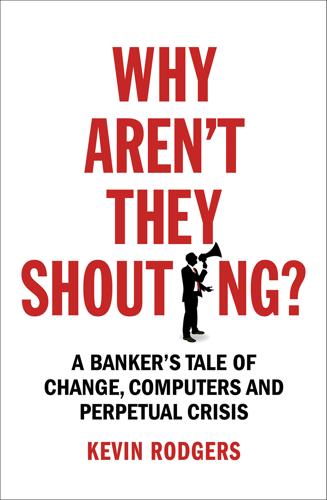
Why Aren't They Shouting?: A Banker’s Tale of Change, Computers and Perpetual Crisis
by
Kevin Rodgers
Published 13 Jul 2016
The market on EBS for US dollars per euro would be trading 20/22, say, and Autobahn would be showing the same price; then the fund would pay Deutsche’s 22 offer (i.e. buy) via Autobahn and, instantaneously it seemed, EBS would jump to 23/25 – an immediate gain for the fund and a loss for Deutsche. The e-traders quickly realised that the fund was engaging in ‘latency arbitrage’. Its computers would constantly monitor the market and wait for a large order or an information release to move prices on EBS or elsewhere. Then its computers would ‘look’ around the prices shown by its banking counterparties and deal on any rate that was too slow to respond. ARM was programmed to alter its prices in this event in a fraction of a second, but the fund was faster.
…
‘It’s like being a gazelle in a herd’, my ex-colleague explained, ‘when a lion is after you; you don’t need to be the fastest, but you’re a blood-caked carcass if you are the slowest.’ For now we were staying ahead of the slowest gazelle. As we and other banks fought back on latency, funds brought other, more sophisticated techniques to bear. Rather than pure latency arbitrage (where, rather like the canny shopper in Loic’s jumper market we met in Chapter 1, a fund could buy at one price and sell at higher one almost simultaneously), funds looked for ‘relative value’ trades. What this meant was that by observing the bids and offers and deals in the market, a fund’s computers would predict the future evolution of prices over a very short time frame and would get ahead of the expected market move before it happened.
…
These include issuing securities, selling and trading those securities (and other products), and offering advice for a fee. Examples: Goldman Sachs, Morgan Stanley, Lehman Brothers, Bear Stearns. latency Delay in the processing of buying or selling signals caused by physical effects or the design of software. ‘Latency arbitrage’ is the activity of exploiting other market participants’ latency for profit. leverage Using borrowing to enhance the returns on an investment strategy. An everyday example is using a mortgage to purchase a house: the buyer only provides a part of the purchase price; the rest is borrowed. Any increases (or decreases) in the value of the property accrue to the buyer alone.
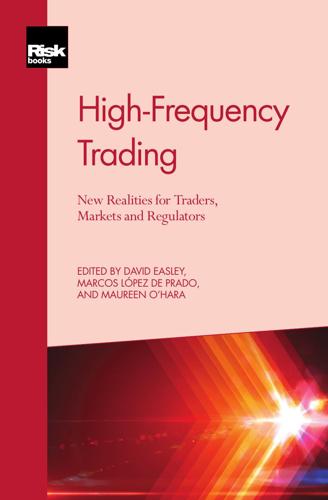
High-Frequency Trading
by
David Easley
,
Marcos López de Prado
and
Maureen O'Hara
Published 28 Sep 2013
Rather than possessing exogenous information yet to be incorporated in the market price, they know that their endogenous actions are likely to trigger a microstructure mechanism, with a foreseeable outcome. Their advent has transformed liquidity provision into a tactical game. We now list a few examples that are discussed in the literature. • Quote stuffers: these engage in “latency arbitrage”. The strat- egy involves overwhelming an exchange with messages, with the sole intention of slowing down competing algorithms, which are forced to parse messages that only the originators know can be ignored (NANEX 2010). • Quote danglers: this strategy sends quotes forcing a squeezed trader to chase a price against their interests.
…
URL: http://www.sec.gov/ news/speech/2013/spch021913ebw.htm. 230 i i i i i i “Easley” — 2013/10/8 — 11:31 — page 231 — #251 i i Index (page numbers in italic type relate to tables or figures) A B algorithmic execution: and leaking of information, 159–83, 160, 162, 163, 165, 167, 168, 169, 171, 172, 174, 176–7, 178–9; see also AlphaMax; BadMax BadMax approach and data sample, 166–8, 168 and BadMax and gross and net alpha, 168–70 and clustering analysis, 170–4, 171, 172, 174 definition, 160–4 and GSET, 174–5, 176–7 and high alpha of large clusters, 170–4 and trading algorithms, 70–1 algorithms: generations of, 23–7 predatory, 8 tactical liquidity provision 10–11 trading: and algorithmic decision-making, 71–2 and algorithmic execution, 70–1 evolution of, 22–8 generations, 23–7; see also trading algorithms, evolution of and indicator zoology, 27–8 and transaction cost, 28–31 AlphaMax, 160–6 passim see also BadMax; information leakage alternative limit order book, 80–6 agent-based model, 83–5, 86 results and conclusion, 85 and spread/price–time priority, 82–3 BadMax 159–83 passim, 169, 178–9, 180–2 and data sample, 166–8 and gross and net alpha, 168–70 profitability grid, 180–2 see also algorithmic execution: and leaking information; AlphaMax; information leakage Black Wednesday, 8 C clustering analysis, and high alpha of large clusters, 170–4 CME, Nasdaq’s joint project with, xvi cointegration, 44, 53–9 Consolidated Audit Tape (CAT), 216 construction of trading signals, 31–8 and order book imbalance, 36–8 and timescales and weights, 31–3, 33 and trade sign autocorrelations, 34–6 cumulative distribution function, 130–1 D dark pools, smart order routing in, 115–22 E equity markets: execution strategies in, 21–41, 25, 29, 30, 33, 35, 37, 38, 40 and fair value and order protection, 38–41, 40 i i i i i i “Easley” — 2013/10/8 — 11:31 — page 232 — #252 i i HIGH-FREQUENCY TRADING and trading signals, construction of, 31–8; see also trading signals and types of client or market agent, 22 European Exchange Rate Mechanism (ERM), sterling joins, 8 execution shortfall, and information leakage, 164–6, 165; see also information leakage execution strategies: in equity markets, 21–41, 25, 29, 30, 33, 35, 37, 38, 40 and fair value and order protection, 38–41, 40 and trading signals, construction of, 31–8; see also trading signals in fixed-income markets, 43–62, 47, 48, 49, 50, 51, 52, 54, 55, 57, 58, 61 and cointegration, 44, 53–9 and information events, 44, 46–53 and pro rata matching, 44, 59–62 and fixed-income products, 44–6 experimental evaluation, 133–40 F fair value and order protection, 38–41, 40 fixed-income markets: execution strategies in, 43–62, 47, 48, 49, 50, 51, 52, 54, 55, 57, 58, 61 and cointegration, 44, 53–9 and information events, 44, 46–53 and pro rata matching, 44, 59–62 and short-term interest rates, 45–6 and Treasury futures, 46 fixed-income products, 44–6 and short-term interest rates, 45–6 and Treasury futures, 46, 47, 48, 51, 52, 55 see also fixed-income markets flash crash, 2, 77–8, 207, 209–10, 210, 218 see also market stress foreign-exchange markets: and the currency market, 65–73 trading algorithms, 69–72 and trading frequencies, 65–73, 72, 73 venues, 66–9 high-frequency trading in, 65–88, 66, 72, 73, 86 academic literature, 74–80 and alternative limit order book, 80–6; see also main entry Foresight Project, 215, 217, 224 futures markets: microstructural volatility in, 125–41, 133, 134, 136, 137, 138–9 experimental evaluation, 133–40 HDF5 file format, 127 maximum intermediate return, 131–2 parallelisation, 132–3 test data, 126–7 and volume-synchronised probability of informed trading, 128–31 G Goldman Sachs Electronic Trading (GSET), 159, 160, 161, 163, 166–80 passim, 167, 168, 169, 174–5 H HDF5 file format, 127 high-frequency trading (HFT): and “cheetah traders”, 1, 13 232 i i i i i i “Easley” — 2013/10/8 — 11:31 — page 233 — #253 i i INDEX and event-based time paradigm, 15 in FX markets 65–88, 66, 72, 73, 86; see also foreign-exchange markets, 74–80 and alternative limit order book, 80–6; see also main entry and the currency market, 65–73 and trading frequencies, 65–73, 72, 73 legislative changes enable, 2 machine learning for, 91–123, 100, 101, 103, 104, 107, 108–9, 111, 117, 121 and high-frequency data, 94–6 and optimised execution in dark pools via censored exploration, 93 and optimised trade execution via reinforcement learning, 92 and predicting price movement from order book state, 92–3 and price movement from order book state, predicting, 104–15 and reinforcement learning for optimised trade execution, 96–104 and smart order routing in dark pools, 115–22 in market stress, 76–80 central bank interventions, 79–80 flash crash (2010), 77–8 yen appreciation (2007), 77 yen appreciation (2011), 78–9 markets’ operation and dynamic interaction changed by, xv and matching engine, 3, 4 and more than speed, 7–12 new paradigm in, 2–4 paradigm of, insights into, 1–17, 7, 10–11, 14 regulatory challenge of, 207–9, 210, 212, 214 good and bad news concerning, 208–14 and greater surveillance and coordination, proposals for, 215–18 and market rules, proposals to change, 218–25 and proposals to curtail HFT, 225–8 solutions, 214–28 statistics to monitor, developing, 15 and time, meaning of, 5–7 and volatility, heightening of, 12 see also low-frequency trading I implementation shortfall: approach to, illustrated, 192–203 daily estimation, 195–9 intra-day estimation, 199–203 shortfall calculations, 193–5 discussed, 186–9 with transitory price effects, 185–206, 196, 197, 198, 199, 200, 202, 203 implementation details, 204–5 and observed and efficient prices and pricing errors, 189–92 indicator zoology, 27–8 information events, 44, 46–53 and event microscope, 50–3 information leakage: and algorithmic execution, 159–83, 176–7, 178–9 BadMax approach and data sample, 166–8, 168 233 i i i i i i “Easley” — 2013/10/8 — 11:31 — page 234 — #254 i i HIGH-FREQUENCY TRADING and BadMax and gross and net alpha, 168–70 and clustering analysis, 170–4, 171, 172, 174 and GSET, 174–5, 176–7 and high alpha of large clusters, 170–4 defining, 160–4 and execution shortfall, 164–6, 165 see also AlphaMax; BadMax L large clusters, high alpha of, 170–4 Large Hadron Collider, 125–41 latency arbitrage, 9 leakage of information: and algorithmic execution, 159–83, 176–7, 178–9 BadMax approach and data sample, 166–8, 168 and BadMax and gross and net alpha, 168–70 and clustering analysis, 170–4, 171, 172, 174 and GSET, 174–5, 176–7 and high alpha of large clusters, 170–4 defining, 160–4 and execution shortfall, 164–6, 165 see also AlphaMax; BadMax liquidity squeezers, 9 liquidity and toxicity contagion, 143–56, 144, 145, 147, 148, 151, 153, 154 empirical analysis, 151–5 order-flow toxicity contagion model, 146–51 low-frequency trading: choices needed for survival of, 15 and event-based time paradigm, 15 joining the herd, 15 and monitoring of HFT activity, 15 and order-flow toxicity, monitoring, 16 and seasonal effects, avoiding, 16 and smart brokers, 16 see also high-frequency trading M machine learning: for high-frequency trading (HFT) and market microstructure, 91–123, 100, 101, 103, 104, 107, 108–9, 111, 117, 121 and high-frequency data, 94–6 and optimised execution in dark pools via censored exploration, 93 and optimised trade execution via reinforcement learning, 92 and predicting price movement from order book state, 92–3 and price movement from order book state, predicting, 104–15 and reinforcement learning for optimised trade execution, 96–104 and smart order routing in dark pools, 115–22 Market Information Data Analytics System (MIDAS), 215–16 market microstructure: machine learning for, 91–123, 100, 101, 103, 104, 107, 108–9, 111, 117, 121 and high-frequency data, 94–6 and optimised execution in dark pools via censored exploration, 93 and optimised trade execution via reinforcement learning, 92 234 i i i i i i “Easley” — 2013/10/8 — 11:31 — page 235 — #255 i i INDEX and predicting price movement from order book state, 92–3 and price movement from order book state, predicting, 104–15 and reinforcement learning for optimised trade execution, 96–104 and smart order routing in dark pools, 115–22 market stress: and central bank interventions, 79–80 and flash crash (2010), 77–8; see also flash crash and yen appreciation (2007), 77 and yen appreciation (2011), 78–9 Markets in Financial Instruments Directive (MiFID), 2, 21, 143, 216 microstructural volatility: in futures markets, 125–41, 133, 134, 136, 137, 138–9 experimental evaluation, 133–40 HDF5 file format, 127 maximum intermediate return, 131–2 parallelisation, 132–3 test data, 126–7 and volume-synchronised probability of informed trading, 128–31 MIDAS, see Market Information Data Analytics System N Nasdaq, CME’s joint project with, xvi O optimised trade execution, reinforcement learning for, 96–104 order book imbalance, 36–8 order-flow toxicity contagion model, 146–51 see also liquidity and toxicity contagion order protection and fair value, 38–41, 40 P pack hunters, 9 parallelisation, 132–3 price movement from order book state, predicting, 104–15 pro rata matching, 44, 59–62 probability of informed trading (PIN), 7 Project Hiberni, xvi Q quote danglers, 9 quote stuffers, 9 R regulation and high-frequency markets, 81, 207–9, 210, 212, 214 good and bad news concerning, 208–14 solutions, 214–28 and greater surveillance and coordination, proposals for, 215–18 and market rules, proposals to change, 218–25 and proposals to curtail HFT, 225–8 Regulation National Market System (Reg NMS), 2, 21, 143, 219 Regulation SCI, 216 reinforcement learning for optimised trade execution, 96–104 Rothschild, Nathan Mayer, 1 S smart order routing in dark pools, 115–22 spread/price–time priority, 82–3 235 i i i i i i “Easley” — 2013/10/8 — 11:31 — page 236 — #256 i i HIGH-FREQUENCY TRADING T time, meaning of, and high-frequency trading, 5–7, 7 Tobin tax, 17, 81, 87 Tradeworx, 215 trading algorithms, 69–72 and algorithmic decision-making, 71–2 and algorithmic execution, 70–1 evolution of, 22–8 generations, 23–7 and indicator zoology, 27–8 see also algorithms trading frequencies, in currency market, 65–73, 72, 73; see also foreign-exchange markets trading signals: construction of, 31–8 and order book imbalance, 36–8 and timescales and weights, 31–3, 33 and trade sign autocorrelations, 34–6 transaction cost, and algorithms, 28–31 transitory price effects: approach to, illustrated, 192–203 daily estimation, 195–9 implementation shortfall calculations, 193–5 intra-day estimation, 199–203 and information shortfall, 185–206, 196, 197, 198, 199, 200, 202, 203 discussed, 186–9 implementation details, 204–5 and observed and efficient prices and pricing errors, 189–92 Treasury futures, 46, 47, 48, 51, 52, 55 V volume clock, 1–17, 7 and time, meaning of, 5–7 volume-synchronised probability of informed trading, 128–31 bars, 128 buckets, 129–30 cumulative distribution function, 130–1 volume classification, 128–9 W Walter, Elisse, 216 Waterloo, Battle of, 1 Y yen appreciation: 2007, 77 2011, 78–9 see also market stress 236 i i i i
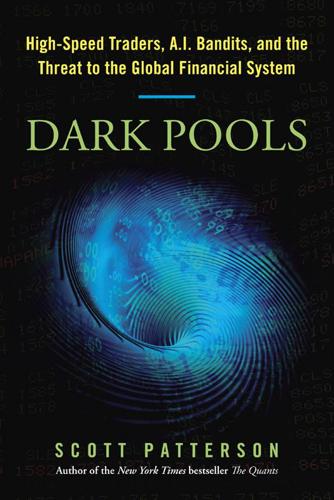
Dark Pools: The Rise of the Machine Traders and the Rigging of the U.S. Stock Market
by
Scott Patterson
Published 11 Jun 2012
Around 2004, he began to develop a strategy to make money trading in dark pools, a rising force in the early 2000s. While institutional traders were running from the lit markets such as Nasdaq into dark pools, in order to get away from the new breed of high-speed traders, like Tradebot, the speed traders devised methods to swim in the dark as well. Known as “latency arbitrage,” the strategy involved gaming the difference between the price of a stock in a dark pool and its price in the lit markets. Tradebot was effectively exploiting the “latency” of the system, a measurement of the time it takes for information to move from place to place in a closed system, such as a market.
…
An inventor at heart, he was still determined to change the world through technology. His next project concerned the computer system that disseminated trade data around the market, the Securities Information Processor, or SIP (the same SIP that high-speed firms such as Tradebot exploited for their latency arbitrage strategies). In the early 2000s, the SIP feed was notoriously slow—giving quick-draw firms opportunities to arbitrage a stock trading at slightly different prices on different pools. Levine submitted a proposal to build what he called the Big J SIP to a committee of market experts that was considering remaking the feed in 2002.
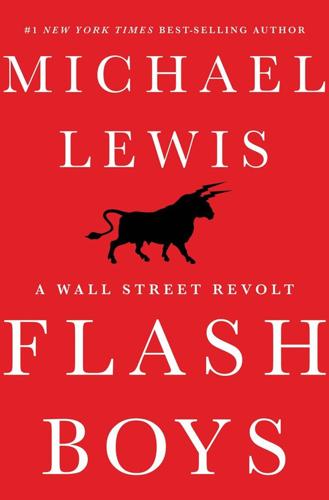
Flash Boys: A Wall Street Revolt
by
Michael Lewis
Published 30 Mar 2014
“Your eye will never pick up what is really happening,” said Brad. “You don’t see shit. Even if you’re a fucking cyborg you don’t see it. But if there was no value to reacting, why would anyone react at all?” The arrival of the prey awakened the predator, who deployed his strategies—rebate arbitrage, latency arbitrage, slow market arbitrage. Brad didn’t need to dwell on these; he’d already walked each of the investors through his earlier discoveries. It was his new findings that he wanted them to focus on.†† On IEX’s opening day—when it had traded just half a million shares—the flow of orders through its computers had been too rapid for the human eye to make sense of it.
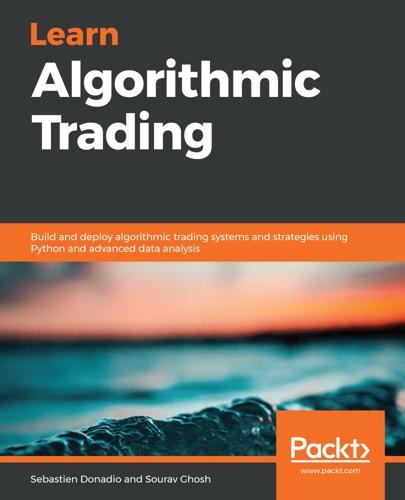
Learn Algorithmic Trading
by
Sebastien Donadio
Published 7 Nov 2019
This has been assisted by a combination of the evolution of both low-level and high-level programming languages, such as C, C++, and Java, along with improvements in compilers that can produce highly-optimized code; both have significantly improved the scalability and speed of what trading systems and trading strategies can be deployed to live trading markets. A lot of market participants also now have access to microwave networks that can transmit data between locations much faster than physical fiber connections can, leading to latency-arbitrage opportunities. Time and time again, participants who have maintained their technological edge and kept up with the technological advancements made by their competition have been the ones to survive. Large algorithmic/HFT trading firms with superior technologies have even cornered the market on some trades and made it impossible for others to compete with them.
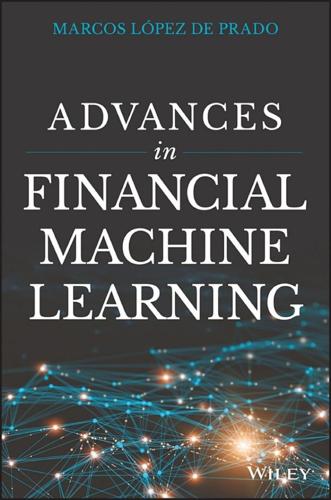
Advances in Financial Machine Learning
by
Marcos Lopez de Prado
Published 2 Feb 2018
They conclude that measuring these magnitudes is relevant to model the dynamics of the bid-ask spread. Easley et al. [2012] also argue that large quote cancellation rates may be indicative of low liquidity, as participants are publishing quotes that do not intend to get filled. They discuss four categories of predatory algorithms: Quote stuffers: They engage in “latency arbitrage.” Their strategy involves overwhelming an exchange with messages, with the sole intention of slowing down competing algorithms, which are forced to parse messages that only the originators know can be ignored. Quote danglers: This strategy sends quotes that force a squeezed trader to chase a price against her interests.